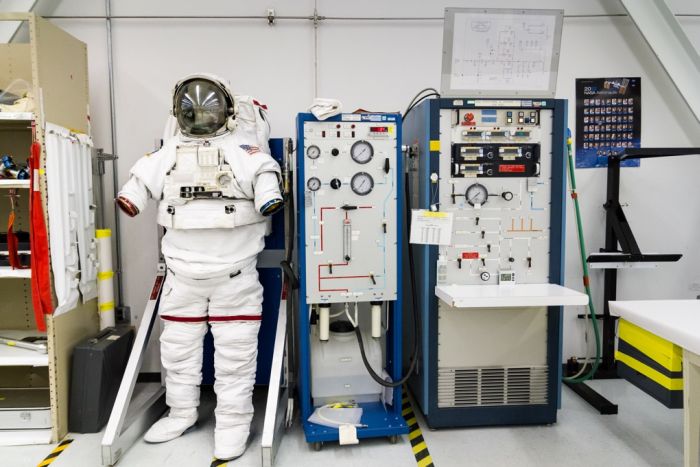|
|
Neutral Buoyancy Laboratory Training Facility, Houston, Texas, United States
|
The NBL tank itself is 202 feet (62 m) in length, 102 feet (31 m) wide, and 40 feet 6 inches (12.34 m) deep, and contains 6.2 million gallons (23.5 million litres) of water. Divers breathe nitrox while working in the tank.
One downside of using neutral buoyancy to simulate microgravity is the significant amount of drag presented by water. This makes it difficult to set an object in motion, and difficult to keep it in motion. It also makes it easier to keep the object stationary. This effect is the opposite of what is experienced in space, where it is easy to set an object in motion, but very difficult to keep it still. Generally, drag effects are minimized by doing tasks slowly in the water. Another downside of neutral buoyancy simulation is that astronauts are not weightless within their suits, meaning that as an astronaut tilts the suit they are forced to lean against whatever inside surface is facing down. This can be uncomfortable in certain orientations such as heads-down. Thus, precise suit sizing is critical.
|
|









